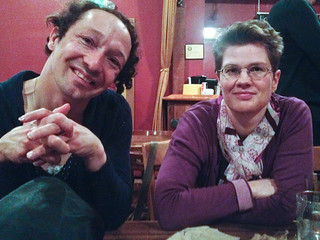One of Southwest Portland’s most passionate advocates for a safer Barbur Boulevard said Tuesday that he was nearly killed while biking on the street.
“FYI since you’re waiting for someone to die before safe Barbur bike access: it was almost me today,” wrote Damian Miller, an assistant director of research and assessment at Lewis and Clark College’s graduate school, in the first of a trio of open Twitter messages to the Oregon Department of Transportation and its new regional manager. “Speeding delivery truck came up behind honked, veered wildly, almost hit me & left lane car.”
Though the route’s design evokes a freeway, it’s the only flat and direct street between most of Southwest Portland and the rest of the city. During the summer, about 300 to 500 people bike it each day.
As Miller discussed in a 2013 video interview with The Oregonian, it’s not just bikes that seem to be unsafe on this mile-long wooded stretch of Barbur Boulevard connecting Southwest Portland to the rest of the city. On average, one person has died there each of the last six years.
All but one of those collisions were speed-related.
Advertisement
Last summer, ODOT studied the effects of reducing the street to one lane in each direction for a construction zone, and found that the number of people traveling at 55 mph or faster fell 68 percent.
It also found that average peak travel times on the busiest weekdays increased by only about one minute, and that essentially no one bothered to change routes.

(Data via ODOT. Chart by BikePortland.)
ODOT has offered various explanations for its not wanting to restripe the street to remove unnecessary passing lanes. Among them: that Barbur should serve as a permanent safety valve for the days when Interstate 5 becomes congested by a car crash; that Barbur needs to preserve its excess auto capacity in case an earthquake shuts down I-5 but not Barbur; and that without all its current space devoted to car traffic, the street might become congested by 2035.
Miller seemed to be alluding to the last of these possibilities in his final tweet about the issue Tuesday night.
“I lived,” he wrote. “You get to keep lanes for theoretical future traffic that’s more important than my life.”
The most likely decision-maker on this issue is ODOT’s Portland regional manager Rian Windsheimer, who to our knowledge hasn’t yet taken a public position about Barbur since being promoted into the position last year.




